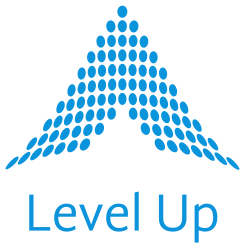If you’ve been doing DevOps for a while already, when it comes to security for cloud native apps, you’ve surely heard it all by now:
- “Security is everyone’s responsibility.”
- “Bake security into your source code, don’t bolt it on after.”
- “Shift left.”
These DevSecOps slogans all sound great, but turning them into reality takes more than repetition. You need actual tools that work the way your teams work. You also need processes that can co-evolve with those tools and teams in real-time. And above all, your organization needs genuine developer ownership… but without adding red tape or slowing application release velocity.
A recent Gartner® report (sponsored by HashiCorp®) bypasses any “vendor security theater” and gets serious about how to streamline your DevSecOps profile. One key highlight? HashiCorp Vault® as a critical solution for secrets management, helping security become a first-class feature of developer velocity, not an outlier and chronic bottleneck.
Here are a few of Level Up’s DevSecOps insights which build on Gartner’s takeaways:
Teams: “Shift Left” Means Actual Developer Ownership
It’s easy to declare “everyone owns security around here,” but much harder to support (and properly fund) the tools and workflows that will make it real. Because let’s be honest: if your team only owns the security of your apps while you’re all in the building, 8am to 5pm Monday thru Friday, do you really own it? And if security is just another change control checkbox that redirects developers into a maze of compliance docs every time they want to push a bug fix to prod, it simply won’t scale.
What does work though? Empowering dev teams to make optimally-secure choices: cloud-natively, as friction-free as possible, and early and often in the development lifecycle. As highlighted in the Gartner report, HashiCorp Vault emerges here as a best practice solution for helping teams manage secrets and access policies programmatically, without slowing down deployment or ops.
| SIDEBAR: Five Ways HashiCorp Vault Makes Life Easier for Platform Teams 1) Dynamic Secrets on Demand Stop hardcoding credentials. Vault generates time-bound secrets for databases, cloud providers, and more, just-in-time and just long enough. 2) Unified Identity-Based Access Control Map app and human identities to policies, not static keys. No more juggling SSH keys or managing user lists in 5 different tools. 3) Secret Rotation Made Easy Rotate database creds, TLS certs, and tokens automatically, and without downtime or app restarts. 4) Environment-Agnostic Security Whether you’re running in AWS, Azure, GCP, or on-prem, Vault works everywhere to provide consistent secret management. 5) Auditability and Compliance Built-In Every access request and credential issuance is logged. Prove compliance without extra work (let alone extra spreadsheets). |
Processes: If It Lives in a Static Doc, It’s Already Outdated
Internal SOPs are great… until the moment your architecture, org chart, or threat surface changes. (So, yesterday.)
The only way to keep up is to build security into the very fabric of how your team ships software. Vault, when paired with Red Hat® Ansible® and/or Terraform®, lets your teams codify access and secrets management the same way they already handle infrastructure as code: with version control, end to end automation, and authenticated-user- and application-call-level audit trails.
This takes “compliance” from being something you tell management and external auditors you’re still doing semiannually, to being something you can see being fully-enforced in your dashboards and logs moment to moment.
Tools: These Should Enforce Your Processes, Not the Other Way Around
Unfortunately, this is one of the biggest blindspots we have seen in organizations who are struggling with DevSecOps adoption, and it starts with the misguided optimism that you can define a process that teams will follow when they use tools.
Instead, in our experience, the optimal order turns out to be:
A TEAM uses –> a TOOL, which is designed to follow –> a PROCESS, which leads to –> SUCCESS!
A true DevSecOps toolchain should consistently and automatically reinforce whatever you’ve already designed as your best practices and standard operating procedures for every CI/CD pipeline step. But too often in practice, the reverse happens: app teams are expected to remember and manually adapt their pipelines to fit around rigid, fragmented security tooling. And no surprise in many of those cases, the “securing the app” work doesn’t always happen when the “releasing the app” work happens.
The good news is that Vault doesn’t make you choose between security and agility. It integrates cleanly into your CI/CD pipeline, supports dynamic secrets, and enables identity-based access controls, all while giving informational security teams visibility and policy enforcement.
| SIDEBAR: How to Inject Secrets Dynamically into Ephemeral Containers ✅ Use Vault Agent Sidecar Run a lightweight Vault agent alongside your container to auto-fetch and template secrets at startup. ✅ Leverage Kubernetes CSI Provider Mount secrets directly into your pods using the Vault CSI driver. No app changes required. ✅ Enable Vault’s AppRole Auth Method Securely authenticate containers without static tokens by assigning short-lived, scoped credentials to workloads. ✅ Template Secrets into Volumes or Env Vars Vault Agent can render secrets into shared memory volumes or inject them into environment variables at runtime. ✅ Trigger Secret Refresh Without Restarts Use signals or watch mechanisms to reload secrets without tearing down your container. Great for high-availability microservices. |
Make the “Sec” DevSecOps as Real as the “Dev” and the “Ops”
DevSecOps isn’t just a framework. It’s an operating model. And it works when you combine the right team culture with the right tools.
At Level Up, we help teams become cloud native, securely and at scale, using solutions like HashiCorp Vault and Terraform.
Ready to go beyond infosec theory? Drop us a line at arc@levelupla.io talk Vault, DevSecOps, or your cloud-native roadmap.
